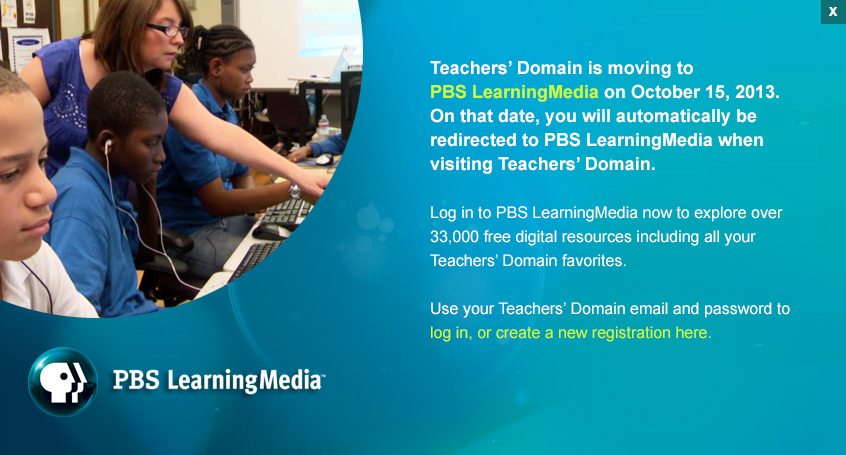Teachers' Domain - Digital Media for the Classroom and Professional Development
User: Preview
Gene Control
(Video)
Genetic Tool Kit
(Video)
Human Genome Project
(Video)
Journey into DNA
(Interactive)
 Loading Standards
Loading StandardsIn this activity, students explore the structure of the DNA molecule and begin to understand how chromosomes, genes, and the base pairs, sugars, and phosphates of the DNA molecule are related. Students view and discuss video segments that describe the role of various genetic units. They also build models of DNA molecules -- using gumdrops, licorice, and toothpicks. At the end of the lesson, they join their model molecules together to form one large strand of DNA.
1. Have students explore the Journey into DNA in pairs. When pairs are finished, discuss the meaning of each section as well as any questions students have during the activity. When finished, discuss the following:
2. Have students watch the Human Genome Project video and discuss the following:
3. Divide the class into groups of three or four students. Give each group a copy of the nucleotide schematic and the licorice, toothpicks, and gumdrops. Tell each group to study the picture, making note of the following:
4. Tell students that they are going to build models of the DNA molecule, each five nucleotides long, using the materials you have given them. In other words, they're building the equivalent of genes. Remind students that, while the order of nucleotides could be critically important in a real gene, they should not be concerned about the order of their nucleotides, as long as the bases are paired correctly (see above). Write the following key on the board. Ask students to refer to the key when constructing their models.
Key
5. Have the groups begin producing their models, as follows: Each model should consist of two strands of licorice, with five gumdrops attached to each strand. Tell students to use short sections of toothpick to attach the gumdrops to the strands at equal intervals. Because each color gumdrop represents a different base, the gumdrops on one strand must correspond to the appropriate gumdrops on the opposite strand. For example, a red gumdrop always pairs with an orange gumdrop, while a green gumdrop always pairs with a yellow gumdrop. Instruct students to attach the gumdrop base pairs with pieces of toothpick. The resulting model can be handled carefully without it falling apart.
6. Have students write down the base pairs of their model molecules. Each group will probably have a different sequence of base pairs for each molecule. Some examples are listed below.
Molecule 1
| Left Strand | Right Strand | Base Pairs |
| yellow gumdrop - G | green gumdrop - C | GC |
| red - A | orange - T | AT |
| red - A | orange - T | AT |
| green - C | yellow - G | CG |
| yellow - G | green - C | GC |
Molecule 2
| Left Strand | Right Strand | Base Pairs |
| orange gumdrop - T | red gumdrop - A | TA |
| red - A | orange - T | AT |
| red - A | orange - T | AT |
| orange - T | red - A | TA |
| green - C | yellow - G | CG |
7. Write each group's base-pair sequences on the board. When finished, you will have the sequence for the entire class. Remind students that the class sequence is only a tiny fraction of most real DNA molecule sequences.
8. Have groups connect their DNA segments to form a giant model DNA molecule.
9. Have students watch the Gene Control and Genetic Tool Kit videos and discuss the following:
Ask students to discuss the following:
 Teachers' Domain is proud to be a Pathways portal to the National Science Digital Library.
Teachers' Domain is proud to be a Pathways portal to the National Science Digital Library.
